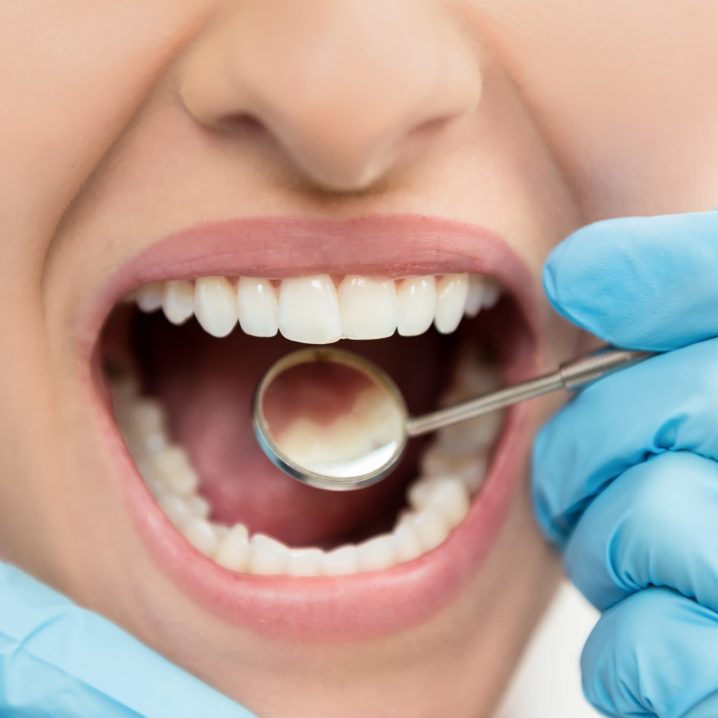
- POPSUGAR Australia
- Fitness
- The Drill-Free Cavity Treatment You Probably Didn’t Know About
The Drill-Free Cavity Treatment You Probably Didn’t Know About

Anyone who has had cavities knows that they can be a major pain – literally and figuratively. Between the uncomfortable toothache and the stress of having to get a filling, or even a root canal, it’s all-around a pretty miserable experience.
However, not many people know that there is an option for strengthening your teeth against cavities and decay that does not involve any needles. Silver diamine fluoride is a clear liquid that dentists can easily apply to your teeth with a brush.
We asked Dr. Pradeep Adatrow, D.D.S., of Advanced Dental Implant and TMJ Center in Southaven, Mississippi, to break down the benefits and risks of this lesser-known treatment.
Dr. Adatrow defines silver diamine fluoride as “a low-cost, non-invasive, topically-applied medication” made up of silver, ammonia, fluoride, and water.
The liquid has actually been used to treat tooth decay globally for decades, but was only approved by the Food and Drug Administration in 2014 as an off-label medication to treat dental sensitivity. It has since been approved by the American Dental Association as a treatment for cavities.
So how does it work? Each ingredient has different properties that help fight decay.
“Silver is known for its antibacterial properties and fluoride dramatically increases the rate of re-mineralization of tooth enamel by saliva while increasing enamel resistance to acid degradation,” explains Dr. Adatrow. These qualities work together to strengthen the tooth against decay.
Related: You’ve Probably Been Using Way Too Much Toothpaste This Whole Time
As for the actual process of administering it, dentists use small spoon-shaped instruments called excavators to clear any decay and then apply the liquid over the affected area. Occasionally, a dentist may use a slow-speed drill to remove the decay, but this is different from the kind of drill we usually think of that cuts teeth. These slow-speed drills can be used without anesthetics.
It turns out that there are a lot of benefits to SDF compared to traditional fillings, starting with cost-effectiveness. According to Dr. Adatrow, the procedure costs around $50-$120, but pricing could depend on your location and provider. The remineralization and antibacterial properties of the medicine can also help avoid potential future cavities. Plus, because the procedure is apparently quick and painless, it does not require needles or anesthetics.
Of course, it is important to understand the drawbacks of any medical procedure before considering it.
“The most crucial drawback to SDF is the discoloration or staining that occurs due to silver particles,” says Dr. Adatrow. “When SDF is applied on a tooth, it turns black, and so aesthetically, it is unpleasant.”
You should also avoid the treatment if you have an allergy to silver, an aversion to fluoride, or tooth inflammation. In cases where the tooth decay is too far along and requires a root canal, SDF should not be used. And remember to always consult with your dentist about what treatment plan is best for you.
Click here for more health and wellness stories, tips, and news.

